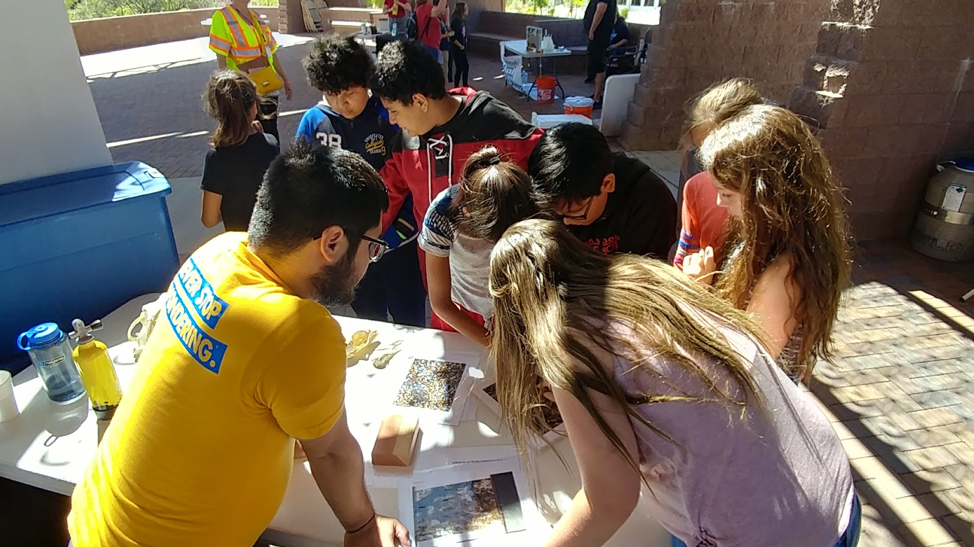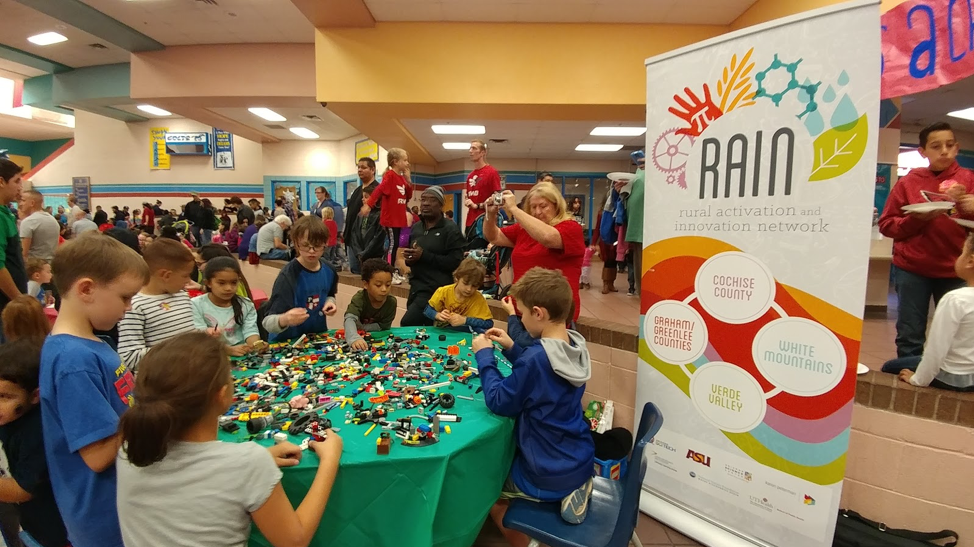It's RAIN-ing STEM in rural Arizona
Kalman Mannis is the Project Director of the Rural Activation and Innovation Network (RAIN), as well as the Chief Education Officer of Bisbee Science and Research Center in Bisbee, Arizona.
According to recent research conducted by a U.S. interagency federal task force, rural communities across the country have a dearth of STEM resources. As they also experience geographic isolation, health and food deserts, and a lack of informal STEM opportunities (such as museums, zoos, botanic gardens, and private foundations), rural and remote communities are falling behind in 21st century workforce development and student achievement.
In October 2016, the National Science Foundation’s Advancing Informal STEM Learning (AISL) program awarded funds to a partnership among Arizona State University, the Arizona Science Center, and COSI (the Center of Science and Industry) (award no. 1612555). The funds were used to create the Rural Activation and Innovation Network (RAIN), of which I am the director. RAIN brings informal STEM learning opportunities to four underserved regions in Arizona and studies how rural and remote communities shift their STEM identities with support from place-based stakeholders.

How and where RAIN works
RAIN’s mission is to provide rural communities with opportunities to explore local STEM resources, help them build capacity by engaging with national and international projects, support informal STEM learning at libraries and community centers, and help change the way rural populations view STEM by showing them how STEM impacts their lives. RAIN also serves as a resource for best practices in informal STEM program development and works to highlight effective STEM programs and organizations across the state of Arizona.
Some of the research questions that RAIN explores involve social networking, STEM identity, and STEM self-efficacy in relation to the increase in STEM opportunities. An additional goal is to provide much-needed data on best practices for reaching rural audiences. The selected regions, including Cochise, Graham, and Greenlee Counties; the Verde Valley; and the Navapache/White Mountains region, represent the diversity of Arizona’s rural and remote population—Native Americans and Latinx (a majority minority population), as well as Whites living below the poverty line. Within these regions, there is also an area with a significant retired or elderly population, and a military base.
A strategy to address capacity issues
RAIN addresses a core, societal need to improve STEM awareness and identity. We hope to achieve a systemic change in the value of STEM in the public’s daily life. Personally, I have found promoting this change even more compelling in rural communities, where there is a limited number of people to pull from in order to reach this goal.
As human capacity and time are limited resources, the RAIN network was designed as a multi-site research project, based around local stakeholders who were recruited to create Rural Innovation Councils (RICs). Each RIC was tasked with marketing the program and encouraging the development of informal STEM programming in their designated region. Through the current impact year, mainly organizations and after-school programs were encouraged to submit grant proposals. With the guidance of the RIC teams, grassroots STEM activities have been implemented throughout the study regions.
A few unique programs that have been developed include an Experimental Aircraft Builders program, a Science and Exploration Center at the Mexican/U.S. border, Discovery Learning Camps, rural library makerspaces, support for after-school innovation clubs, and capacity building trainings for early childhood STEM programs. You can see more about RAIN programs and success stories here.

RAIN’s impact as a critical convenor
As year three comes to a close, the work of RAIN has already become vitally important to Arizona’s comprehensive STEM ecosystem as it connects partners in rural regions. What is developing, quite unexpectedly and organically, is a rural and remote-oriented community of practice. By the end of 2019, more than 90 programs will have been funded across the state, with data collected to quantify the impact on STEM access, interest, and learning.
The added benefit for state-level organizations is that they are also able to effectively and meaningfully provide resources to rural communities through the RICs. These organizations include, for example, state parks, Local First Arizona, Arizona Science Center, Arizona State University, Arizona Libraries, 4H, Arizona Game and Fish, Arizona Wildlife Foundation, Sentinel Landscape Restoration Project, Arizona Commerce Authority, and the Arizona Technology Council. All in all, RAIN has been able to unify STEM organizations across the state to enhance access and build capacity in communities that rarely have the opportunity to see how 21st century skills can positively impact their lives.
RAIN also makes grants to local Arizona organizations. If you are interested in applying for a grant, visit our website (4azrain.org) to learn more about the opportunities in your community. Contact me, Kal Mannis, with any additional questions at mannisk@azscience.org.